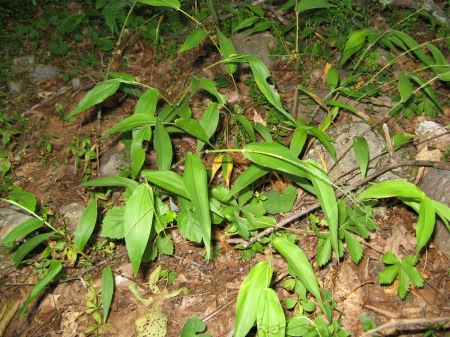Deer-tongue Grass
Now, there’s a name! This plant came to be called this because the leaf supposedly resembles a deer’s tongue. Not being a hunter, I have no idea what a deer tongue looks like, but perhaps a hunter will see this post and comment. I found this alongside the driveway, in mottled shade and took a rather poor picture of it. After a good bit of research, I stumbled across the website of Glenn Galau, a professor at the University of Georgia in Athens. He generously offered his “reasonably confident” opinion that it was a species of dichanthelium. After looking at more plant sites featuring pictures of dichanthelium, I’m going to go further out on the limb, since I didn’t take a specimen of the plant to study, and say that it may well be dichanthelium clandestinum, commonly known as Deer-tongue grass.
Deer-tongue Grass is often described as a weed, but according to Garden Guides, it is used “for revegetating disturbed areas where site conditions limit the use of other species.” It is tolerant of low pH soil conditions, soils with concentrations of aluminum, and dry and infertile soils, thus making it an ideal candidate for revegetating land that has been strip-mined for coal.

The five-leaved plant in the lower right corner is a variety of potentilla canadensis, commonly called Canadian or Dwarf Cinquefoil. It grows in rocky open woods, typically in acid soil, according to MissouriPlants.com and that is precisely where I found it, though I don’t know whether the soil is acid or not. The indigenous inhabitants of the area used the pounded roots of the plant as a treatment for diarrhea.

I also love the common names of plants. Like pokeweed. Monkey weed. Or is it pig weed? I wish I could keep them all straight.
I really love the common names of plants—some of them are quite poetic and whimsical. I, too, am clueless about whether or not a deer’s tongue looks like this, but I like the name.